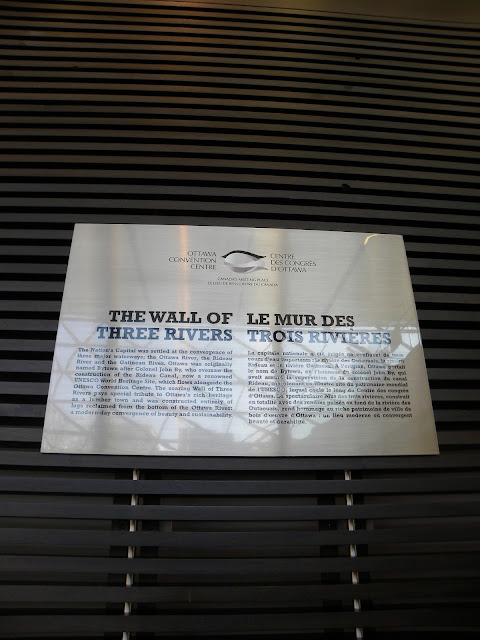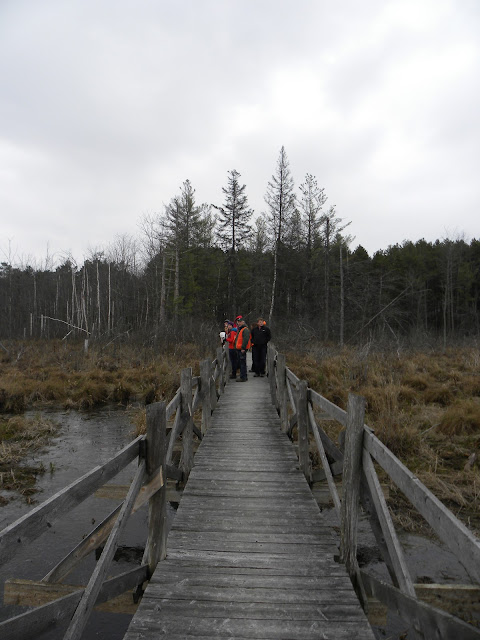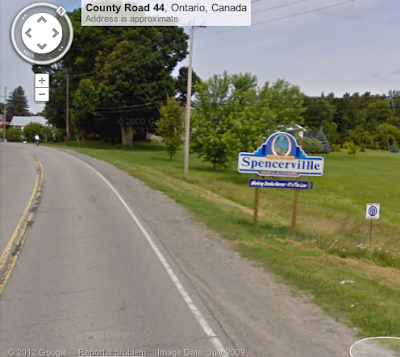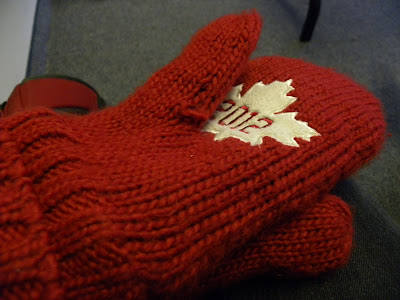Due to the unreliability of the people in control of the day's theme *ahem* we were left without a solid plan. But Jon and Steve are magicians and we had an eventful day anyhow.
We drove downtown and discussed government in front of City Hall. And it was freezing. Then we walked to Parliament Hill. And it was freezing. We were going to just look around the lobby but we instead got the chance to sit in on a question period at the House of Commons. The suits discussed abortion, the arts, the jets and how much they hate each other while the speaker feigned interest.
We saw this happen!
http://www.cbc.ca/news/politics/story/2012/11/30/pol-robocalls-investigation-across-canada.html?cmp=rss
Government is reality TV.
BEST CLASS EVER!
Saturday, December 1, 2012
Week 10 - Transportation Day!
As I was to present this day I was too nervous to take pictures but I remember what happened.
Fox, H. E., Kareiva, P., Silliman, B., Hitt, J., Lytle, D.A., Halpern, B.S., Hawkes, C.V., Lawler, J., Neel, M., Olden, J.D., Schlaepfer, M.A., Smith, K. and H. Tallis. 2009. Why do we fly? Ecologists’ sins of emission. Frontiers in Ecology and the Environment 7:294-296
Pucher, J., & Buehler, R. (2008). Cycling for Everyone: Lessons from Europe. Transportation Research Record: Journal of the Transportation Research Board,2074(-1), 58–65.
- We stopped off at a bike path to discuss modern green transportation across the globe. For being the capital of Canada we are far far behind European green initiatives. Cycling in the Netherlands, Denmark and Germany is more of way of life than a means of transportation. The differences are safety and cost: bicycle lane ways are separate from roads, intersections have bicycle priority, traffic in neighbourhoods are calm, bike theft is low and training is mandatory in school.
- We then visited an OC Transpo Park and Ride where we discussed biofuel and public transportation.
- Out next stop was a converted train track where nature-lovers bird watch and dog-walk.
- The last stop of the day was Ottawa International where we ate lunch while watching planes land. Then wearing a giant muskrat hat I discussed the history of fur-bearing animals in Canada and the ecological consequences of their exploitation. Afterwards we went upstairs to meet with the Environmental manager of the airport who outlined the environmental measures:
- Stormwater Monitoring
- Aircraft Noise Management
- Groundwater Monitoring
- Hazardous Materials
- Environmental Assessments
- Waste Reduction/Recycling
- Energy Efficiency
Pucher, J., & Buehler, R. (2008). Cycling for Everyone: Lessons from Europe. Transportation Research Record: Journal of the Transportation Research Board,2074(-1), 58–65.
Week 9 - Green Development
To start off Green Development Day we had a presentation on biomagnification by Melissa. Unrelated but informative! It is becoming a health issue in Northern Aboriginal communities where they eat top predators such as beluga whales.
We were already in the River Building so we went upstairs to meet with Murdo Murchison, the sustainability coordinator of Carleton.
He took us up to the experimental green roof.
Green roofs provide ecosystem services in urban areas, including improved storm-water management,
better regulation of building temperatures, reduced urban heat-island effects, and increased urban wildlife habitat (Oberndorfer et al., 2007).
Crab claw brought in by a bird.
We drove downtown to visit the LEED (Leadership in Energy and Environmental Design) certified convention center.
Cal looking up at the egg containing the upstairs washrooms.
Wood salvaged from three rivers near/ in Ottawa.
Salvageable concrete was recycled from the old convention center.
Tank-holding elevator on hydraulics!
No pane of glass is the same. Windows are fully cleaned three times a year.
Happy to be in the ladies washroom.
After getting poutine and beavertails we were on our way to RVCA.
Rideau Valley Conservation Authority is also LEED certified, using grey water to flush their toilets. Recycling grey water is a largely under developed idea that many people turn up their noses to but using drinking to flush our toilets seems crazier than the green alternative (Jefferson et al., 2004).
To end the day Kim presented on traditional ecological knowledge and it's use in modern development.
Jefferson, B., Palmer, A., Jeffrey, P., Stuetz, R., & Judd, S.
(2004). Grey water characterisation and its impact on the selection and
operation of technologies for urban reuse. Water Science & Technology, 50(2), 157–164.
OBERNDORFER,
E., LUNDHOLM, J., BASS, B., COFFMAN, R. R., DOSHI, H., DUNNETT, N., GAFFIN, S.,
et al. (2007). Green Roofs as Urban Ecosystems: Ecological Structures,
Functions, and Services. BioScience, 57(10), 823.
Week 8 - Resource Day!
Limerick Forest!
Being welcomed into a log cabin with a fireplace, coffee and bathrooms was a lovely surprise!
Geoff gave us a presentation on Limerick forest's history, management and uses.
- 1/3 wetland, 1/3 plantation, 1/3 natural forest
- They've planted 8 million trees
- A little under 6000 hectares
- 1940 - first tree planted
- 2008 - FSC certified
Managing the forest is about managing people:
- Use
- Respect
- "Everyone's Forest"
Scott from MNR, got his job by "doin' what other people won't".
He acts a a liaison between hunters and MNR.
The most seductive raccoon.
A boardwalk built by volunteers, looks out over a boggy pond with an excess of muskrat burrows.
Frozen oily ice.
Deer carcass!
Stone house remains from the Irish settlers. Could not farm, too rocky and sandy.
They have successfully managed a timber business and maintained trails for various outdoor activities but are in need of nature programs. Nature photographers and birdwatchers are important for forest conservation. They are extremely observant to changes and act as a strong voice for conservation issues. Getting children involved is also important, raising a generation who cares in the age of development and technology is pivotal.
Tiana :)
Week 7 - Energy!
Officially November and the weather finally caught up with us. It was supposed to be Energy and Aboriginal Day but Kim didn't have time to present on Traditional Ecological Knowledge (TEK) so it was more focussed on energy.
We drove to Spencerville, where the town motto is... wait for it...
"Working Smoke Alarms - It's the Law!"
Spencerville is also the home of a a saw and wheat mill built on the South Nation river. They have had a methy mercury problem from old logs in the river.
Next we visited a fishway where a past graduate did her thesis.
Due to the drought both the dam and the fishway were significantly too dry to be of any use.
The fish way was constructed to provide an alternate route for fish instead of going straight through the dam.
We warmed up in a gas station and then found a baby windmill as backdrop for Caleigh's presentation on wind power. She found that wind power is indeed a viable energy alternative, but not everywhere. Coastal communities a ways away from people is best for maximum wind strength and minimum noise complaints.
So strong!
Next we drove to the St. Lawrence Sea Way where Taylor told us all about the history.
We watched a ship pass through which was a tad anticlimactic.
Then back on the road to Cornwall to visit the dam.
We met Dr. Jerome Marty who chose to stand beside the shiniest garbage can in the history of garbage cans.
Dam Facts:
- 100 year lifetime
- On Mohawk territory
- 97% of Quebec's energy comes from Hydro
- Monitoring flow rates helps maintain habitats
- Level of Lake Ontario is due to dams
- Lake sturgeon and eels are affected
- Eel and fish ladders
- 6 villages flooded when dam was built
- Flooded peat lands released methane, toxins and contaminants that were trapped in the land
- Bottom of the lake is 3.9 C
We need power, but at what cost?
Week 6 - Env. & Health Day
Jon and Mia took over for Environment and Health Day and we started out on campus for a talk on biophilia.
Biophilia is the human attraction to all that is alive and vital (nature). Our modern society is becoming more biophobic than biophilic (Simaika & Samways, 2009)
We found that the little program of Enviro Sci was chosen by all class members due to outdoor experiences as children.
Working with children I see the changes first hand. Richard Louv presented an idea in his 2005 book "Last Child in the Woods" called "nature deficit disorder". This disorder may be linked to the increase of attention deficit disorder in children (Louv, 2005).
We then visited Ottawa River Keeper where we covered topics such as ecoli, the new Fisheries Act amendments and what they are doing as a non-profit organization.
As I previously mentioned, the River Keeper has adopted the same mentality as Gatineau Park, they say, "it's your river, it should be swimmable, drinkable and fishable". I think that the ownership of the river does not help it's protection because because of the "tragedy of the commons". ("Everyone else is keeping the river clean, so I can dump a little garbage and it won't matter", yet everyone is thinking the same thing and the river becomes polluted.)
Our next stop was on Bank street to talk about the struggling ferret population in Grasslands National Park.
Her dog Rebel.
Night vision cameras were set up to monitor the ferret holes and they captured this gem. Maybe my favourite picture ever.
It was love. I brushed my teeth.
We stopped at the flour shoppe for a treat :) Thanks Connor!
Our last stop of the day was the arboretum where Jon talked about lichen. Lichen is used as a ecological indicator to monitor disturbances in polluted areas (Pinho et al., 2004). We set off in search of lichen.
We found some but I instead took a picture of a tree.
It was 24 C and gorgeous.
Hide and seek champion!
Pinho, P., Augusto, S., Branquinho, C., Bio, A., Pereira, M. J., Soares, A., & Catarino, F. (2004). Mapping lichen diversity as a first step for air quality assessment. Journal of Atmospheric Chemistry, 49(1), 377–389.
Simaika, J. P., & Samways, M. J. (2010). Biophilia as a Universal Ethic for Conserving Biodiversity. Conservation Biology, 24(3), 903–906
Thursday, November 29, 2012
Week 5 - Agriculture!
AGRICULTURE DAY!
We met up with Robin of Roots and Shoots farm in Manotick just outside of the city. This location is prime to get local product to market without using excess resources (Azadi et al., 2011). From the farm the produce gets sold at weekend markets and directly to the community through his CSA.
We were his farm hands for the morning.
He took us on a little tour first though.
Spinach growing in a greenhouse he bought used on Kijiji. He rotates what crops are grown in the greenhouse ending the season with winter lettuces and greens.
Harvested squash.
The van I see parked at Carleton during the Sunday market at Brewer Park.
The class is standing behind the converted cold room for storage/ kitchen for the interns. On the right side is a system of sinks (bathtubs) for washing before sorting the produce into bins.
He cut costs by purchasing used farm equipment designed for small farms.
We walked into the fields as he explained what permaculture practices he adopted and sets us straight to work on the carrots and beets.
Connor, Taylor and Melissa, carrot-picker extraordinaires.
Zoomed in. Whatta gem.
The afternoon was spent in a compost facility where all City of Ottawa greenbox waste is sent.
I felt just like Wall E from the clip below. Except with steam and rain and flies.
We were given a tour of the facility with 6 compost tunnels covering 50 acres where 60 trucks a day deliver Ottawa's compost waste. The tunnels are kept at 55 C for 5 -15 days to kill pathogens.
He said in the winter it snows inside, I can't even imagine the horror.
But it was a learning experience. I learnt that I want to farm and never ever go to a dump or compost facility again. I learn something new everyday (especially Friday's). <3
AZADI, H., S. SCHOONBEEK, H. MAHMOUDI, B. DERUDDER, P. DE MAEYER & F. WITLOX (2011) “Organic agriculture and sustainable food production system: Main potentials”. Agriculture, Ecosystems & Environment. Vol. 144 (1), pp. 92-94.
Tilman, D., Balzer, C., Hill, J., & Befort, B. L. (2011). Global food demand and the sustainable intensification of agriculture. Proceedings of the National Academy of Sciences of the United States of America, 108(50), 20260–20264.
Week 4 - Parks Conservation & Management at Gatineau Park
As the weather was looking up we ventured over the bridge to Gatineau Park.
I now wonder if this building was LEED certified...
Mitten weather!
- User/ user conflicts
- ex. Climbers vs. bikers
- User/ Residents (wildlife)
- Habitat degradation
He asked our opinion on whether the natural ecology of the park was salvageable and I was/am not optimistic. People "need" access roads, roads fragment habitat affecting species in many negative ways such as construction pollutants, species segregation and increased human traffic.
To protect nature we must limit human interaction.
To protect nature we must limit human interaction.
In a paper by Thurston and Reader the affect of recreational activities (hiking and biking) on forest vegetation was studied and both activities were found to have devastating effects on the vegetation but once discontinued, the forest had a full recovery (2001).
I think that these findings point towards the discontinuation of activities but in Gatineau Park they are alternating trails to allow for periodic restoration.
Something I noticed when speaking with the protection/ conservation people was the approach they took to getting "users" involved. Instead of saying, it's nature's park, treat it with respect (take nothing but pictures, leave nothing but footprints), they take the approach to park "ownership". It's your park to keep clean.. etc.
I did not agree with that approach and think that it should be rethought.
After the presentation we all reverted to our 7-year old selfs and played around in the welcome center.
A peculiar looking bear
Interactive learning!
Blanding's replica
We roll out of the welcome center in search of a backdrop for Connor's talk and look what we find...
Perfect! and freezing!
Before his mustache took over, Connor informed the group all about the importance of beavers to the colonization of Canada, their ecosystem engineering abilities and how in the hopes to start a fur trade they became European invasive species.
Giant grass.
Steve looks mad but he's just enthusiastic about this particular beaver dam stopper!
People live in Gatineau Park which is something I couldn't wrap my head around. How could it be a nature reserve and a residential area?? The need for power and services cannot be ignored.
The lake we are standing on the shore of has homes along the left.
As snow falls magically around her, Tiana informs the class about coyotes. She focussed on their range expansion into city centers and what is being done about it.
SNOW!
http://www.mun.ca/biology/ywiersma/BIOC4041.pdf
Subscribe to:
Comments (Atom)


























































